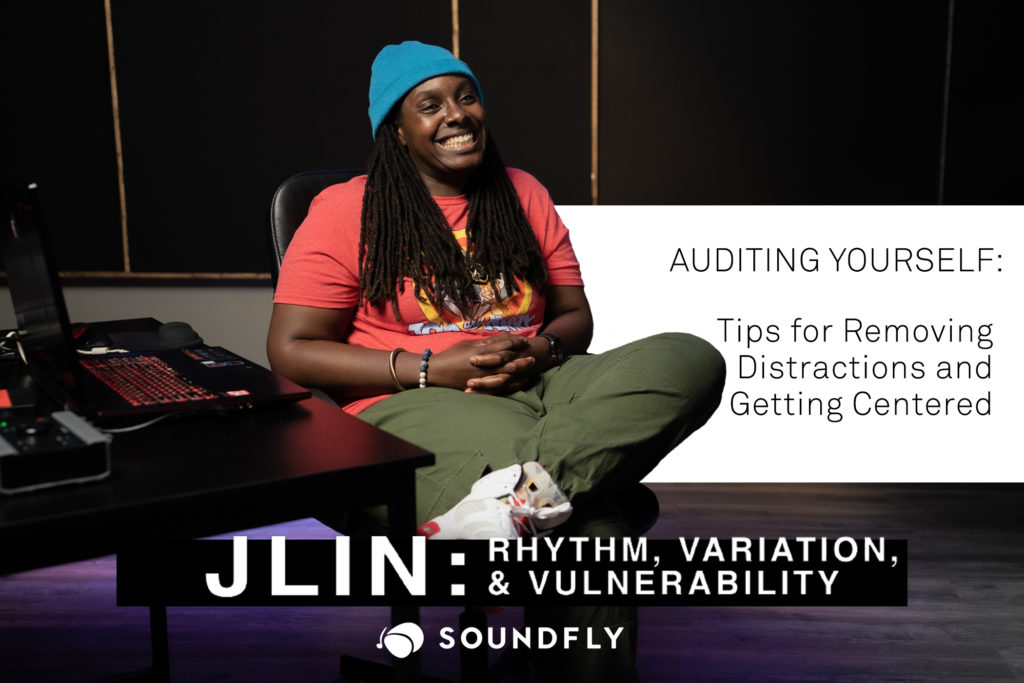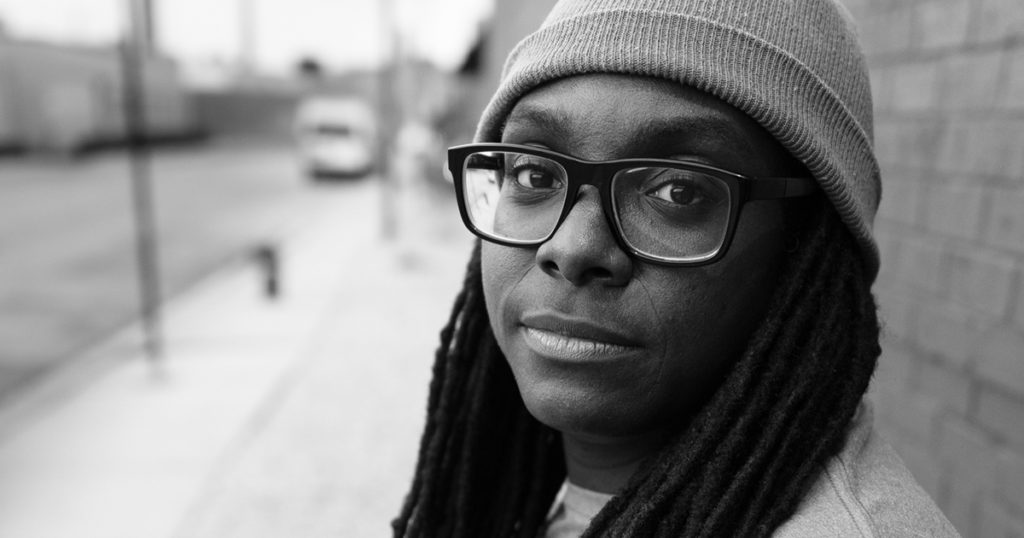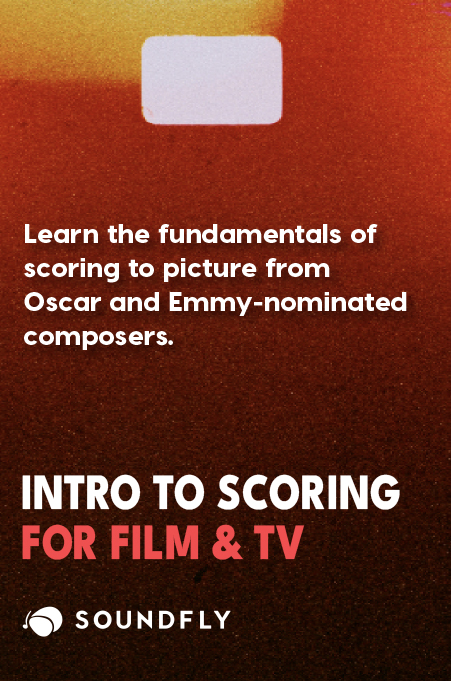+ This lesson is presented courtesy of Jlin’s course on Soundfly, Rhythm, Variation, & Vulnerability. Sign up and learn to create deeply complex rhythmic tapestries of sound, brimming with emotion.
In Jlin’s exclusive course on Soundfly, she talks about running to a place where she can’t hide. That’s because her approach to the creative process involves going deep inside herself, conquering her fears, accepting her flaws, and burying her ego.
In her mind, trying to run from yourself means that what you produce won’t be authentic to you.
Everyone has their own approach to self-reflection and analysis, and we’re not here to tell you how to do it. A process of self-interrogation is deeply personal. Jlin’s process is constantly changing, and the specific struggles she faces are different every year. I’m sure yours will be as well.
That said, here are some tools that may help you get centered, clear away distractions, and hopefully make music from a better, more creative place, whatever that means to you.
Tools for Centering Yourself
Routines and practices that help you feel grounded and centered can be really useful in order to approach self-reflection from a strong foundation.
1. Start with a meditative exercise.
One of the best places to start working on yourself is coordinating your mind, body, and breathing. Some artists choose to follow a regular meditative practice like yoga, meditation, tai chi, or just spending a moment breathing with intentionality before starting to create. If you’re new to meditation, an app like Calm might be helpful.
Alternatively, you can incorporate physical exercise into your routine, which has been shown to improve mental health in a variety of ways.
2. Cultivate a specific creative environment for yourself.
Creating an effective ritual for yourself around your creativity can also help you soften your ego and rid yourself of unwanted distractions.
If you’re a Soundfly subscriber, you can check out this lesson from our course with experimental pop artist Kimbra about how she cultivates a creative environment around her to help effectively channel positivity.
Tools for Clearing Away Obstacles
The obstacles we face when creating can be technical, like not knowing how to do something, or they can be more mental, like fearing you’re not good enough to try something.
Hopefully, we can help you through technical issues with our courses, but sometimes the mental obstacles are the harder ones to get past.
1. Try doing “morning pages.”
“Morning pages” is an idea espoused by author Julia Cameron in her book The Artist’s Way. The idea is that you complete three pages of stream-of-consciousness writing every day before your day really even begins. It does not matter what you write about, just write.
This practice is kind of like a brain dump, allowing you to clear out all sorts of mental debris, whatever it may be. You can read more here.
2. Start a dialogue with the sides of your personality.
We all have multiple sides to our personalities and it can be worth having a dialogue with them. Who is turning up for you right now, in this moment?
- Is it the Critic, telling you that what you’re doing is not good enough, or the Censor, telling you you shouldn’t say that?
- Is it the Booster, telling you everything you do is great?
- Is it the Robot, telling you to march ahead mindlessly or the Conservative, telling you to hold back?
Spend a minute reflecting on the different characters that tend to appear in your head, and maybe even name them. Some characters are helpful in certain situations and less so in others. Understanding the sides of your personality can give you the space to tell yourself things like: “Thank you, Robot, for helping me finish this idea, but I don’t need you right now.”
3. Face discomfort.
Discomfort is how we grow, but we can’t deal with it 24/7 or we’d crash. Because of that, we all have ingrained avoidance techniques we rely on to bypass or ignore feeling uncomfortable, even when we know we shouldn’t.
A fantastic leadership coach named Didier Sylvain recommends asking yourself:
- What’s the uncomfortable thing I need to face right now in my personal life? How will I get ready to face it?
- What’s the uncomfortable thing I need to face right now in my work or creative life? How will I get ready to face it?
A little planning can help you confront something that’s been burdening you!
Tools for Being Strategic
Finally, these frameworks can be useful, but to take it all to the next level, you need to put your observations into practice with planning and action. How can you take what you discover while reflecting and centering yourself and turn it into actions that will help you going forward?
1. Generate strategies based on the past.
Specifically, what were the moments in your life when you felt at your best, creatively? What was happening during those times, both externally and internally? Are there ways you can cultivate and call on those same things going forward?
Write down your answers and look for ways to incorporate them into your daily practice.
2. Surround yourself with people, places, and practices that nourish you.
Sylvian calls this your “Proximity Plan.” Ask yourself what people, places, or practices help you be at your best. Then, make a plan to spend more time with them.

Go ahead and pick one technique from the list above (or something else you find on your own) and integrate it into your creative practice this week. At the end of a week, ask yourself: What did that do for me? Is it helpful? If so, how can I build on it going forward? If not, try another and see where that takes you.
We’d love to hear what you come up with. If you’re a Soundfly subscriber, please feel free to share in our #share-your-goals channel in our Slack community.
Don’t stop here!
Continue learning with hundreds of lessons on songwriting, mixing, DIY home recording and production, composing, beat making, and so much more in Soundfly’s courses with artists like RJD2, Ryan Lott, Kiefer, and Jlin: Rhythm, Variation, & Vulnerability.






